The Bangweulu Wetlands 6,000 km2 ecosystem consists of floodplains, seasonally flooded grasslands, miombo woodlands, and permanent swamps fed by the Chambeshi, Luapula, Lukulu, and Lulimala rivers, a vast and lush wetland landscape.
Since African Parks assumed management of the area in 2008, populations of many species – including the iconic sitatunga, black lechwe and shoebill – have recovered.
Species Restorations
 © Mana Meadows
© Mana MeadowsBefore 2008, heavy poaching had decimated the area’s large mammals. Some species were completely wiped out, including lion, cheetah, and black rhino, while remnant populations of other species remained. Since then, protection measures and translocations have repopulated areas that were previously depleted of wildlife:
-
In 2017, 250 animals including impala, zebra, puku and waterbuck were released into the wetlands.
-
In 2019, 95 buffalo were translocated from South Luangwa National Park to increase genetic diversity in Bangweulu.
-
2020 and 2021 marked the historic return of the cheetah, with the successful reintroduction of seven individuals to help restore the landscape in a collaborative effort between the DNPW, African Parks, Endangered Wildlife Trust, Ashia Cheetah Conservation and National Geographic. In 2022, in collaboration with Ashia, two more were relocated from South Africa to boost Bangweulu’s numbers; both adapted quickly and were hunting successfully within a few days.
-
Serval were introduced in 2012.
The Shoebill Management Plan came to fruition in 2022 with the completion of a captive rearing and rehabilitation facility – the first of its kind for shoebills. With support from the African Wildlife Conservation Foundation and Ashia Cheetah Conservation, the facility, equipped with state-of-the-art incubators and brooders, supports every stage of the chicks’ development. Five chicks were rescued and successfully reared, to be released into the wild in 2023.
In the field, the Shoebill Guard Programme employs local fishermen to ensure the safety of shoebill nests, while researchers utilise camera traps to monitor the progress of eggs, chicks, and fledglings. Community cooperation and enhanced awareness have resulted in a marked improvement in the number of nests producing fledglings over the years.
Monitoring and Surveys
Bangweulu is home to a significant population of endemic black lechwe, listed as vulnerable on the IUCN Red List. The population has increased from 15,000 in 2008 to about 42,000 today. Annual large mammal surveys have revealed regular increases in populations of sitatunga, southern reedbuck, tsessebe, and oribi.
Conservation Law Enforcement
 © Mana Meadows
© Mana MeadowsThanks to a well-equipped and trained conservation law enforcement team of some 100 members, there has been an 80% decrease in poaching across all chiefdoms since 2008, allowing species such as black lechwe to make a remarkable comeback. The team has focused on harnessing potential and building capacity, including human rights training and specialist training, resulting in improvements in effective data collection, documentation and tracking tools.
In 2021, Chikuni Camp became the central point for all water-based operations within the core conservation area, while three camps established in Chiundaponde, Chitambo, and Kopa handle land-based operations.
A fishing ban, implemented during the spawning season to allow fish stocks time to recover, has had good support from the community and improved fishing yields as a result.
